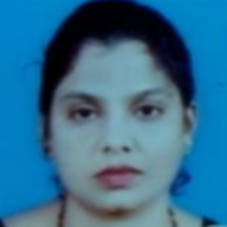International Journal of Computer Network and Information Security (IJCNIS)
IJCNIS Vol. 15, No. 1, 8 Feb. 2023
Cover page and Table of Contents: PDF (size: 399KB)
Software Reliability Growth Models with Exponentiated-gompertz Testing Effort and Release Time Determination
Full Text (PDF, 399KB), PP.81-92
Views: 0 Downloads: 0
Author(s)
Index Terms
Software Testing, Testing Effort, Software Reliability, Software Cost, Mean Square Error, Absolute Error
Abstract
Cite This Paper
Ahmad Raad Raheem, Shaheda Akthar, "Software Reliability Growth Models with Exponentiated-gompertz Testing Effort and Release Time Determination", International Journal of Computer Network and Information Security(IJCNIS), Vol.15, No.1, pp.81-92, 2023. DOI:10.5815/ijcnis.2023.01.07
Reference
[1] A. L. Goel and K. Okumoto, “Time-Dependent Error-Detection Rate Model for Software Reliability and Other Performance Measures,” IEEE Trans. Rel., vol. R-28, no. 3, pp. 206–211, Aug. 1979, doi: 10.1109/TR.1979.5220566.
[2] S. Yamada and S. Osaki, “Software Reliability Growth Modeling: Models and Applications,” IIEEE Trans. Software Eng., vol. SE-11, no. 12, pp. 1431–1437, Dec. 1985, doi: 10.1109/TSE.1985.232179.
[3] M. Ohba, “Inflection S-Shaped Software Reliability Growth Model,” in Stochastic Models in Reliability Theory, vol. 235, S. Osaki and Y. Hatoyama, Eds. Berlin, Heidelberg: Springer Berlin Heidelberg, 1984, pp. 144–162. doi: 10.1007/978-3-642-45587-2_10.
[4] B. Ciciani and A. Pasquini, “Software Reliability Models and Test Coverage,” in Safe Comp 96, E. Schoitsch, Ed. London: Springer London, 1997, pp. 105–114. doi: 10.1007/978-1-4471-0937-2_9.
[5] X. Cai and M. R. Lyu, “Software Reliability Modeling with Test Coverage: Experimentation and Measurement with A Fault-Tolerant Software Project,” in the 18th IEEE International Symposium on Software Reliability (ISSRE ’07), Trollhattan, Sweden, Nov. 2007, pp. 17–26. doi: 10.1109/ISSRE.2007.17.
[6] Q. Li and H. Pham, “A testing-coverage software reliability model considering fault removal efficiency and error generation,” PLoS ONE, vol. 12, no. 7, p. e0181524, Jul. 2017, doi: 10.1371/journal.pone.0181524.
[7] S. Yamada, H. Narihisa, and S. Osaki, “Optimum release policies for a software system with a scheduled software delivery time,” International Journal of Systems Science, vol. 15, no. 8, pp. 905–914, Aug. 1984, doi: 10.1080/00207728408926610.
[8] Chin-Yu Huang, Sy-Yen Luo, and M. R. Lyu, “Optimal software release policy based on cost and reliability with testing efficiency,” in Proceedings. Twenty-Third Annual International Computer Software and Applications Conference (Cat. No.99CB37032), Phoenix, AZ, USA, 1999, pp. 468–473. doi: 10.1109/CMPSAC.1999.814328.
[9] P. K. Kapur and R. B. Garg, “Cost–reliability optimum release policies for a software system under penalty cost,” International Journal of Systems Science, vol. 20, no. 12, pp. 2547–2562, Dec. 1989, doi: 10.1080/00207728908910332.
[10] L. Fiondella and S. S. Gokhale, “Software Reliability Models Incorporating Testing Effort,” OPSEARCH, vol. 45, no. 4, pp. 351–368, Dec. 2008, doi: 10.1007/BF03398825.
[11] S. Yamada, H. Ohtera, and H. Narihisa, “Software Reliability Growth Models with Testing-Effort,” IEEE Trans. Rel., vol. 35, no. 1, pp. 19–23, 1986, doi: 10.1109/TR.1986.4335332.
[12] N. Ahmad and Md. Zafar Imam, “Software Reliability Growth Models with Log-logistic Testing-Effort Function: A Comparative Study,” IJCA, vol. 75, no. 12, pp. 8–11, Aug. 2013, doi: 10.5120/13161-0818.
[13] S. Yamada and H. Ohtera, “Software reliability growth models for testing-effort control,” European Journal of Operational Research, vol. 46, no. 3, pp. 343–349, Jun. 1990, doi: 10.1016/0377-2217(90)90009-Z.
[14] M. U. Bokhari and N. Ahmad, “SOFTWARE RELIABILITY GROWTH MODELING FOR EXPONENTIATED WEIBULL FUNCTION WITH ACTUAL SOFTWARE FAILURES DATA,” in Innovative Applications of Information Technology for the Developing World, Kathmandu, Nepal, Jul. 2007, pp. 390–395. doi: 10.1142/9781860948534_0062.
[15] N. Ahmad, M. G. M. Khan, S. M. K. Quadri, and M. Kumar, “Modelling and analysis of software reliability with Burr type X testing‐effort and release‐time determination,” Jnl of Modelling in Management, vol. 4, no. 1, pp. 28–54, Mar. 2009, doi: 10.1108/17465660910943748.
[16] C.-Y. Huang, S.-Y. Kuo, and M. R. Lyu, “An Assessment of Testing-Effort Dependent Software Reliability Growth Models,” IEEE Trans. Rel., vol. 56, no. 2, pp. 198–211, Jun. 2007, doi: 10.1109/TR.2007.895301.
[17] S. Yamada, J. Hishitani, and S. Osaki, “A software reliability growth model for test-effort management,” in [1991] Proceedings the Fifteenth Annual International Computer Software & Applications Conference, Tokyo, Japan, 1991, pp. 585–590. doi: 10.1109/CMPSAC.1991.170243.
[18] K. Pillai and V. S. Sukumaran Nair, “A model for software development effort and cost estimation,” IIEEE Trans. Software Eng., vol. 23, no. 8, pp. 485–497, Aug. 1997, doi: 10.1109/32.624305.
[19] A. El-Gohary, A. Alshamrani, and A. N. Al-Otaibi, “The generalized Gompertz distribution,” Applied Mathematical Modelling, vol. 37, no. 1–2, pp. 13–24, Jan. 2013, doi: 10.1016/j.apm.2011.05.017.
[20] H. H. Abu-Zinadah, “Goodness-of-Fit Tests for the Exponentiated Gompertz Distribution,” vol. 2, no. 4, p. 9, 2014.
[21] S. S. Gokhale and K. S. Trivedi, “Log-logistic software reliability growth model,” in Proceedings Third IEEE International High-Assurance Systems Engineering Symposium (Cat. No.98EX231), Washington, DC, USA, 1998, pp. 34–41. doi: 10.1109/HASE.1998.731593.
[22] Kapur P.K., Pham Hoang A., Gupta, Jha P.C., “Software Reliability, Assessment, with, OR Applications,” ISBN: 978-0-85729-203-2 (Print) 978-0-85729-204-9 (Online)
[23] Stefan Lessmann, Swantje Pietsch, Baesens Bart, Mues Christophe, “Benchmarking, Classification Models, for Software, Defect Prediction- A Proposed. Framework, and Novel Findings”, IEEE Transactions on Software Engineering, Volume 34, Issue 4, July to Aug 2008, Page(s): 485 – 496, DOI: 10.1109/TSE.2008.35
[24] N. Ahmad, Khan M.G.M., L.S. Rafi, "A study of testing effort dependent inflection S ‐ shaped SRGMs with imperfect debugging", International Journal of Quality and Reliability, Management, 2010, Volume27, Issue 1, pages: 89–110, DOI: https://doi.org/10.1108/02656711011009335.
[25] Liebchen Gernot A, Shepperd Martin, “Data sets and Data Quality in Software Engineering”, PROMISE '08Proceeding of the fourth international workshop on Predictor models, in software engg. (PROMISE'08), 2008, ACM, New York, USA, pages: 39- 44, DOI: http://dx.doi.org/10.1145/1370788.137079.
[26] Afzal Wasif and Torkar Richard, “Review - On the application, of genetic, Programming, for software, engineering predictive modeling”, Expert Syst. Appl. 38, 9 (Sept 2011), 11984 to 11997, DOI=http://dx.doi.org/10.1016/j.eswa.2011.03.041.
[27] Samoladas Ioannis, Gousios Georgios, Spinellis Diomidis, Stamelos Ioannis, “The SQO-OSS Quality Model: Measurement Based Open Source Software Evaluation”, Vol. 275, IFIP series: The International, Federation for, Information Processing, pp 237-248.
[28] Md. Nasar, Prashant Johri, Udayan Chanda, “Software Testing Resource Allocation and Release Time Problem: A Review", International Journal of Modern Education and Computer Science, vol.6, no.2, pp.48-55, 2014.
[29] Sharma Kapil,Garg Rakesh , Nagpal C.K.,Garg R.K., “Selection of Optimal SRGMs Using a Distance. Based Approach,” IEEE Transactions on Reliability (Volume: 59, Issue:2, June 2010), Page(s): 266 – 276.
[30] Ohishi Koji, Okamura Hiroyuki, and Dohi Tadashi. 2009. Gompertz software reliability model: Estimation, algorithm and empirical, validation, J. Syst. Softw. 82, March 2009, 535-543. DOI=http://dx.doi.org/10.1016/j.jss.2008.11.840.
[31] Huang Chin Yu,Lyu Michael R., “Estimation & Analysis of Some Generalized Multiple, Change, Point Software Reliability Models,” IEEE Transactions on Reliability ( Volume: 60, Issue: 2, June 2011), Page(s): 498 – 514.
[32] Huang Chin Yu, Hung Tsui-Ying, “Software, reliability, analysis and assessment using queuing. models with multiple. change points”, Vol. 60, Issue 7, October 2010, Pages 2015–2030.
[33] Li X., Xie M., Ng S.H., “Sensitivity analysis of release time of software reliability models incorporating testing effort with multiple change-points”, Applied Mathematical Modeling, Volume 34, Issue 11, November 2010, Pages 3560-3570, DOI: https://doi.org/10.1016/j.apm.2010.03.006
[34] Kalaimagal Sivamuni and Srinivasan Rengaramanujam, 2008, A retrospective on software component quality models, ACM SIGSOFT Engg. Notes, Volume 33, Issue 6 (October 2008), Pages 1 to 10, DOI: http://dx.doi.org/10.1145/1449603.1449611.
[35] Chandra MouliVenkata Srinivas Akana, C. Divakar, Ch. Satyanarayana, "Design of Generalized Weighted Laplacian Based Quality Assessment for Software Reliability Growth Models", International Journal of Information Technology and Computer Science, Vol.10, No.5, pp.48-54, 2018.
[36] Saeid A. Keshtgar, Bahman B. Arasteh,"Enhancing Software Reliability against Soft-Error using Minimum Redundancy on Critical Data", International Journal of Computer Network and Information Security, Vol.9, No.5, pp.21-30, 2017.
[37] Javaid Iqbal,"Analysis of Some Software Reliability Growth Models with Learning Effects", International Journal of Mathematical Sciences and Computing, Vol.2, No.3, pp.58-70, 2016.
[38] Mohd. Anjum, Md. Asraful Haque, Nesar Ahmad,"Analysis and Ranking of Software Reliability Models Based on Weighted Criteria Value", International Journal of Information Technology and Computer Science, vol.5, no.2, pp.1-14, 2013.
[39] Y TOHMA, JACOBY, MURATA, YAMAMOTO “Hyper- Geometric Distribution Model to Estimate the Number of Residual Software Faults” IIEEE Trans. Eng.1989.
[40] H. Pham, System Software Reliability. 2006. Accessed: Jun. 14, 2021. [Online]. Available: https://doi.org/10.1007/1-84628-295-0
[41] S. Yamada, and H.Ohtera, “Software reliability growth models for testing-effort control Elsevier Science Publishers B.V. (North-Holland) 1990.
[42] S. Yamada, J. Hishitani, and S. Osaki “Software-Reliability Growth with a Weibull Test-Effort: A Model & Application” IIEEE Trans. Reliability Eng., vol. 42, no. 1, Mar. 1993, doi: 10.1109/32.624305.

